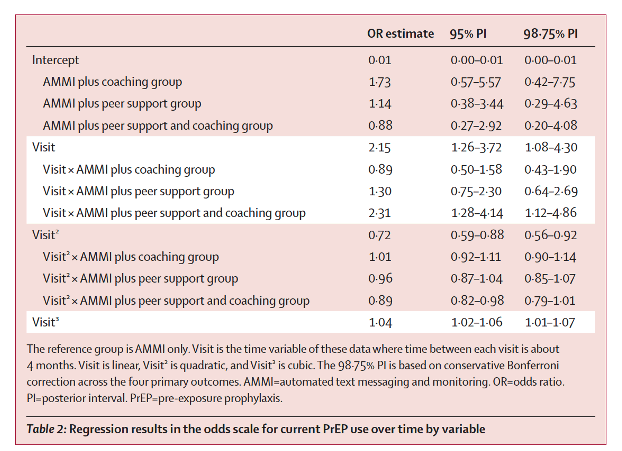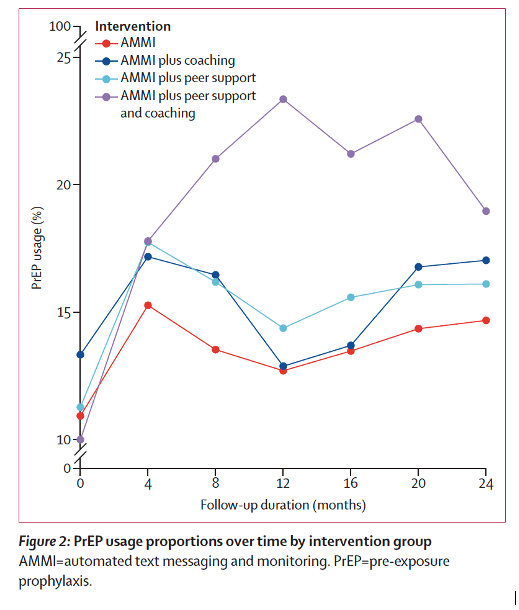| |
HIV Prevention Doubles PrEP Use: auto text messaging+mobile web-app peer support+non-maulaized telehealth coaching by paraprofessionals
|
| |
| |
Download the PDF here
Download the PDF here
Optimal strategies to improve uptake of and adherence to HIV prevention among young people at risk for HIV acquisition in the USA (ATN 149): a randomised, controlled, factorial trial
March, 2024
Our study was designed to assess HIV prevention interventions on the basis of core evidence-based intervention functions delivered by readily available and adaptable platforms: automated text messaging (AMMI), mobile web-app peer support, and non-manualised telehealth coaching by paraprofessionals.
AMMI plus peer support and coaching showed significantly higher PrEP use over time compared with AMMI only (and other groups), with the linear (visit) peer support plus coaching × time interaction coefficients representing trajectory differences relative to AMMI and PIs excluding 1 (OR 2⋅31, 95% PI 1⋅28-4⋅14, 98⋅75% PI 12-4⋅86, table 2).
Results - significant increases in current PrEP use from baseline to 4 months for the AMMI only reference, peer support, and coaching groups mirror national trends for PrEP coverage (the ratio of users to those with indication for PrEP) of about 15% among young people aged 16-24 years in 2019-20.1
Observed and estimated PrEP use in the combined intervention reached greater than 20% of participants by 8 months (Figure 2, Figure 3; appendix p 11), approaching 2019 PrEP coverage rates that include older adults reported by the CDC for the nation (24⋅5%), California state (25⋅3%), and Louisiana state (24⋅6%).1 According to modelling studies by LeVasseur and colleagues,29 25% PrEP coverage might be sufficient to bend the curve on new HIV infections in the absence of other prevention strategies among GBMSM. Furthermore, this coverage ratio exceeds the national average for Hispanic or Latinx people (14⋅5%) and Black or African American people (8⋅0%),1 groups that each make up 29% and 40% of our study sample, respectively. This difference suggests that the combined intervention might mitigate age and racial or ethnic disparities in PrEP use. Post-hoc analyses are in progress to assess subgroup intervention effects, including based on condom use and partner numbers given that there were no intervention effects on condom use, sexual partner numbers, PEP prescription, or adherence to PrEP or PEP.


|
|
| |
| |
|
|
|